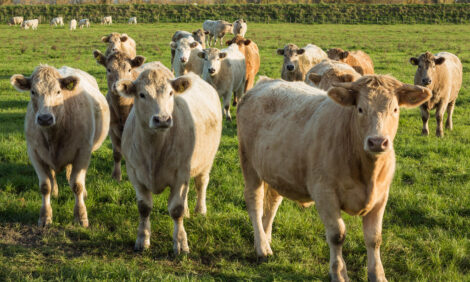



Pain management is quickest route to improved welfare
Increased use of pain management would offer immediate opportunities to improve ruminant welfare across the UK at little extra cost, according to views captured at a recent workshop, writes Ruth Wills.Ruminant Health and Welfare (RH&W) identified a number of welfare challenges and positive interventions in the session, which brought together vets, researchers, farmers and other industry professionals.
Vice chairman Gwyn Jones, who ran the workshop with the help of six facilitators, says: “We discussed cattle and sheep welfare on-farm, identified positive interventions which could be easily implemented, and considered how these could be promoted. Increased use of pain management was highlighted as the one which could make the most immediate impact, offering significant welfare improvements.”
Anaesthetics already safeguard against pain during a range of surgical procedures and their use is embedded in farm and veterinary practice and underpinned in law, he explains. “But the opportunity for non-steroidal anti-inflammatory drugs to deliver longer term pain management means we can now do more, especially during bouts of disease and post-surgery.”
Widening the range of conditions where non-steroidals can be prescribed routinely by vets must be a quick win for animal welfare, he adds. “The opportunities are particularly interesting for small ruminants, where some products are not currently licensed for use.
“The conversation around pain management for docking and castration in lambs prompted a worthwhile discussion about whether the procedures can be avoided in the first place, which we will explore further. The availability of abattoirs or on-farm euthanasia in emergency situations was another interesting topic,” says Mr Jones.
The workshop also identified opportunities to deliver improved welfare through changes to handling systems, calf rearing practices, ‘downer’ cow handling, transport and colostrum management. Farmer and vet collaboration, standard operating procedures, knowledge exchange and training were key actions which could improve welfare in these areas, alongside a greater understanding of the cascade approach to off-license medicine use.
In all, over 60 delegates attended, bringing a range of expertise from across the four nations and utilizing the experience of those who are hands-on with cattle and sheep. Speakers added to the debate by giving presentations on topics like global developments in farm animal welfare standards, the consumer view of welfare, precision livestock farming technologies, welfare opportunities from a vet’s perspective, and environmental enrichment.
“Pain management was identified as one of the most accessible ‘wins’ though, as a low cost, easy to use solution which can significantly improve welfare – why wouldn’t you use it?” says Mr Jones. “In all sectors, however, there is room for developing other tools and training to encourage best practice on farm in collaboration with vets and industry bodies.”
Undoubtably there is still work to be done – but this is the first step on the welfare journey, he adds. “All discussions and action points will be taken forward to the steering group, which will develop an action plan to be released later in 2021.”


